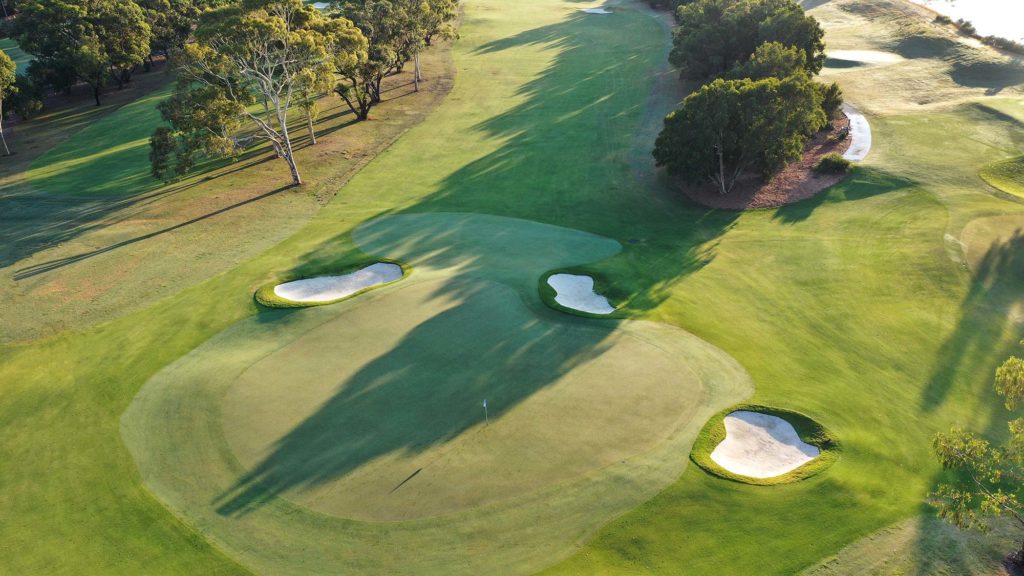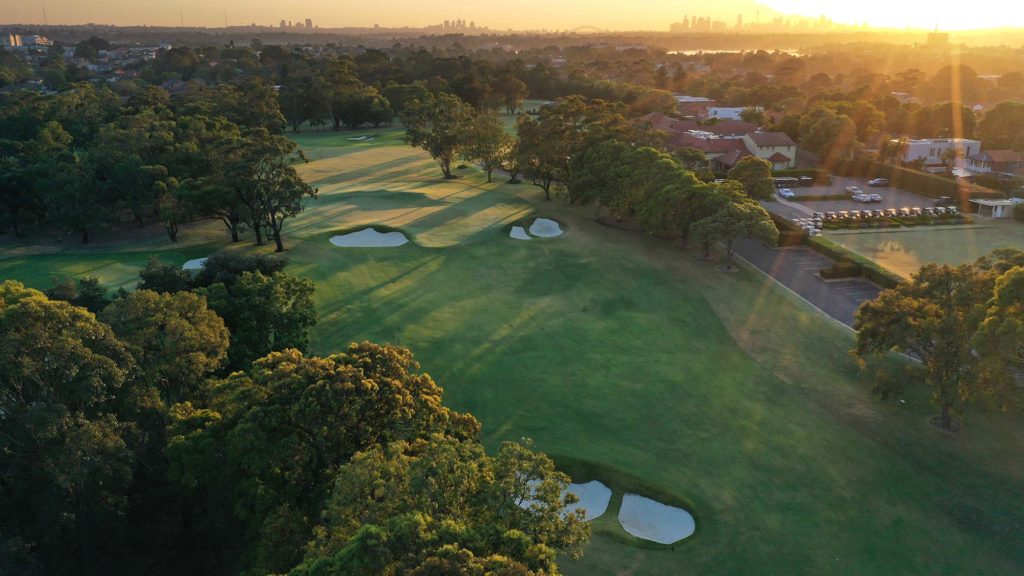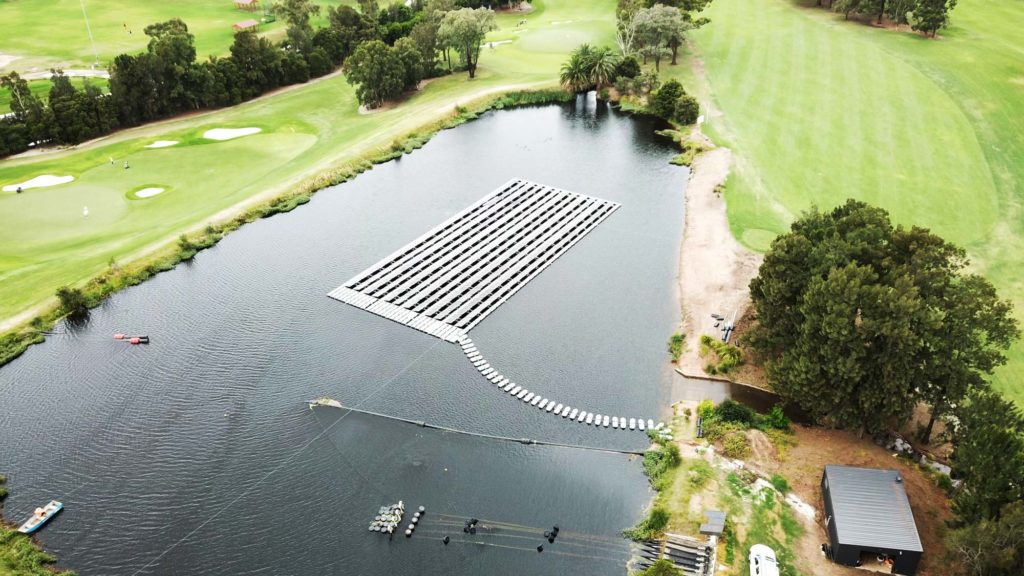A place back on the annual tournament calendar is only half the story at Concord Golf Club. A deliriously happy membership is the other half.
To borrow the time-honoured saying usually attributed to English poet John Lydgate and adapt it to fit golf clubs in Australia: “You can please some of the members all of the time, you can please all of the members some of the time, but you can’t please all of the members all of the time.”
Except, it seems, if you’re a member of Sydney’s Concord Golf Club.
After undergoing a pair of redesigns inside a dozen years – a major one completed by prominent course architect Ross Watson in 1998 and a minor one carried out internally in 2009 – the club bravely floated the ‘R-word’ past its membership one more time halfway through last decade. Another overhaul got the nod (via an 85 percent majority vote) and Concord managed to lure the design services of Tom Doak, the acclaimed American architect who at the time had already given us Barnbougle Dunes in Tasmania and Victoria’s St Andrews Beach.

It was a remarkable outcome on two fronts. Firstly, because the proud membership that had already endured multiple re-dos of its course was prepared to go through the inconvenience yet again, and secondly the ability to engage Tom Doak and Renaissance Golf for a reconstruction project created additional value.
Concord is a compact, 43-hectare parcel of land that slopes from the clubhouse to the Parramatta River near the northern boundary of the course. It is hemmed in by suburbia on all sides and gave Doak no room to expand or to use the site’s periphery for extra space. Plus, there was tree management to consider. While the club was allowed to remove trees in the renovation, it had to strategically replant as many as it took out (in the end, it planted about 25 more than it removed).
Yet Doak and his design associate Brian Slawnik managed to weave their magic, working within those constraints to deliver a vastly improved and more uniform layout during the $4.5 million project. How did they do it? By focusing on the green sites and bunker complexes. That was where Concord had room to improve. Yes, every bunker on the property was rebuilt and they tidied up the place from an overall architectural standpoint, including returning the eighth hole to a par 5 after it had been split into a par 3 and par 4 a decade earlier, and fixing the odd 18th hole where the best line into the green was from the side of the fairway away from the fairway bunkers. Overall, however, it was close to each cup where most activity took place.
Hugging parts of all Concord’s greens now are couch-grass fringes, which provide extensive run-off areas and create so many more options around each one. Golfers can now bounce their iron, pitch and chip shots onto the greens far more than in the past when so many approach shots and greenside plays simply had to take the aerial route due to the green designs and the unpredictable kikuyu surrounds. And by linking the fairways with short-cut kikuyu turf, the fairways have grown by six hectares. To offset the additional maintenance and water usage to cut and irrigate the kikuyu, the club overplanted its kikuyu rough and tee-to-fairway areas with couch, which requires less mowing and water. The colour contrast is prevalent, particularly in winter when the couch turns dormant.

The work happened quickly, beginning in September 2017, ending in April 2018 and carried out nine holes at a time. The result is a far more engaging golf course that the membership – especially a membership that logs as many rounds as Concord’s does – gave 99 percent endorsement.
“The members are happy with the changes. They got what they asked for: it is a more user-friendly golf course because the greens are the defence,” says David Northey, Concord’s director of golf.
“Tom Doak’s vision was to make the course more strategic and less claustrophobic from encroaching trees, by opening up the fairways to keep players in the game and placing a premium on playing to the right part of the fairway to approach the greens and hitting to the right part of the green. The course is now more playable (and enjoyable) for club golfers and easily toughened up for championship and tournament golf.
“Our members like it. They’re brutal in their assessment. If it wasn’t good, they would certainly let us know.”
“The members are so proud of it,” adds Lee Bradsell, who became general manager of Concord in early 2021. “We’ve got record numbers of people coming through. Members are wanting to bring people out here and wanting to entertain.”
If there’s a corner of the property generating most discussion, it’s the area housing the 12th green and the 13th and 14th holes. The 13th is a short, uphill par 4 followed by a short, downhill par 3. The former is driveable for big hitters prepared to hit a sweeping draw and negotiate the yawning front bunker and horseshoe-shaped green, while the latter requires a pinpoint wedge or short iron. Northey says the 14th reminds him of the seventh hole at Pebble Beach… minus the ocean backdrop.
“It’s short and so unassuming and looks like an easy birdie hole, yet many people struggle to make par because of the design of the green and the fall-away on either side. If you miss the green, it will roll away. It’s only just over 120 metres but bogeys are quite easy to have.”
Doak specifically aligned the neighbouring 12th and 14th greens to create a visual illusion of one large putting surface. He noted that he wanted to create some uncertainty in the mind of the golfer to offset the advantage of distance-measuring devices.

BACK IN TOURNAMENT MODE
While Concord’s members approve of their new course, how about the top echelon of golfers? Feedback from the field at last year’s New South Wales Open was also strong, particularly from the players who had seen Concord’s various iterations through the years.
“They certainly liked it,” Northey says. “They understood the brief to the members. The members asked for a course [like this] and they got what they wanted.
“Peter Senior loved it. He feels he can compete because it’s not a bombers’ golf course – it’s a golfer’s golf course.”
If there were any grumblings at Concord last March, they were directed at Mother Nature. Torrential rainfall the week before the NSW Open left all of Sydney soaked, Concord included. The downpours impacted how the golf course played and thwarted much of the pre-tournament efforts of Concord’s superintendent Chris Howe and his staff. Under normal conditions, the perfect putting surfaces are some of the purest and most challenging in the country.
Concord was once an annual fixture on the Australian golf calendar. Between Australian PGA Championships, past NSW Opens, the short-lived Tour Championship and a lone Women’s Australian Open, an annual visit to the part of Sydney that could be called “Istanbul” – where east meets west – seemed almost a given. But tour schedules shrank and tournaments moved to follow commercial requirements, leaving Concord off the radar for nearly two decades. That changed with the successful staging of the NSW Open 13 months ago.
The club will turn 125 in 2024 and after the successful return of the NSW Open to Concord for three years from 2021 to 2023, it is now well positioned to host significant national and internationally accredited tournaments in the future.

It’s an appealing venue for spectators. Centrally located within Sydney and with potential access points along all boundaries, Concord’s small site also means no two holes are that far apart for galleries wanting to cover territory in a hurry.
“We want to showcase that Concord is back to greatness,” Bradsell says. “We’re one of the oldest clubs and we want to demonstrate that we’re supporting the state’s major championship, the NSW Open.
“There are only a few courses in Sydney that can actually do tournaments well. We set the platform last year when we had the heavy rainfall the week before, we were coming out of COVID, we didn’t know what to expect and David and I had only been on the team for a month or two.
“It’s a pretty big deal for our membership and the golf community after a lengthy drought. We wanted to give the members something to celebrate, we want to put the club back on the map well and truly, and we want to show that we’re a great custodian to the game by supporting the NSW Open.
“And while we’re proud of our tradition, we’re also incredibly proud about our sustainability programs [see panel].”
A revamped golf course, high golfer and member appeal, PGA Tour of Australasia tournaments… Concord Golf Club is right back where it belongs.


A SUSTAINABLE FUTURE
As far back as the 1980s, Concord Golf Club had an eye on sustainability and the need to maintain the course without the use of town water when its original stormwater harvesting system was established. But 30 years later, the ageing infrastructure and the opportunities presented by new technologies led to a new project.
The recent project spearheaded by the club’s former president, Terry Williamson, has blossomed into a crucial aspect of the club’s operations and carries the potential to become a major environmental advantage for more golf clubs. Recognising the need to secure access to water to sustain and irrigate the course, a water-harvesting project was envisioned that took stormwater drainage, treated the water to remove pollutants before irrigating the course. Meanwhile, the operation would be powered by solar energy.
Floating on the course’s major water-storage dam, to the left of the eighth fairway, are 216 solar panels on 200 linked pontoons. Just the third setup like it in Australia, locating the panels on water saves on land space while making them more efficient. Evaporation from the water is reduced because the panels sit on top of it, while the cooling effect of placing the solar panels on water creates a higher electricity yield.
The project was actively supported by the local council for access to stormwater drainage, while an infrastructure grant of $808,000 came from the New South Wales Office of Sport Greater Sydney Sports Facility Fund. The club contributed a further $370,000 to achieve what is now a sustainable supply of water.
“One of our board members is involved in the solar industry so that was quite special,” says Lee Bradsell, Concord’s general manager. “It’s interesting how it works for electricity generation with flexible connections for the rising and lowering dam levels, and how it works from a maintenance point of view.
“Initially, what we generate will go towards powering all our irrigation systems and any excess goes back to the network. We’ve got 100 kilowatts just about to be plugged in. Then we’ll be looking at whether we put in battery storage in the future.
“We’re the biggest green space in Canada Bay Council area and the local council doesn’t need to look after it. So it’s one of those wonderful partnerships where we’re the custodians but we want to be more than a golf club; we want to be a very positive story for the local community. There’s also a lot that we want to do to help other clubs and the potential of how they can achieve sustainability and water efficiency.”
All the water that is recycled through the golf course is treated through a UV filter.
“We’ve just had these little add-ons from what began as: how do we make sure we don’t run out of water in the future by making the best use of water that’s running down streets and into drains and the Parramatta River before diverting it, cleaning it and then using it on the golf course.”
THE DETAILS
Concord Golf Club
Where: Majors Bay Rd, Concord NSW 2137
Phone: (02) 9743 6111



